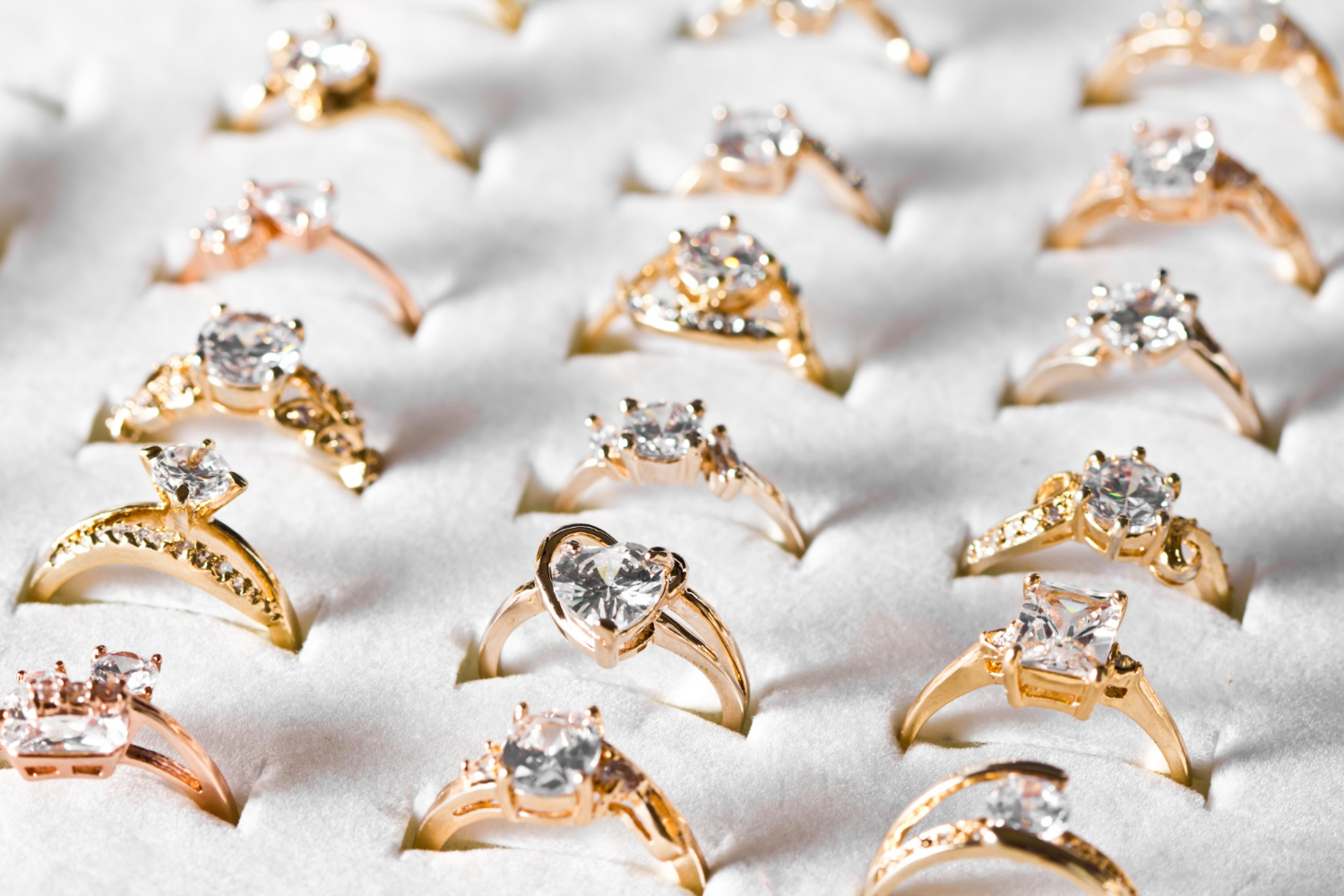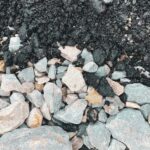Tungsten carbide is a remarkable material known for its exceptional hardness, strength, and resistance to wear and corrosion. It finds applications in various industries, from manufacturing and mining to the jewelry industry. However, there is often confusion regarding its magnetic properties. Is tungsten carbide magnetic, and to what extent? In this article, we will delve into the magnetic nature of tungsten carbide, exploring its characteristics, underlying science, and practical implications.

-
Defining Magnetic Properties
Before we explore tungsten carbide’s magnetic properties, it’s essential to understand what it means for a material to be magnetic. Magnetism is a fundamental property of matter associated with the alignment and motion of atomic and molecular dipoles, which can lead to attraction or repulsion between objects. Magnetic materials can be broadly classified into three categories: ferromagnetic, paramagnetic, and diamagnetic.
1.1 Ferromagnetic Materials
Ferromagnetic materials, such as iron, nickel, and cobalt, exhibit strong and permanent magnetic properties. They have a high magnetic susceptibility, meaning they readily align their magnetic moments in the presence of an external magnetic field and can retain this magnetization even after the field is removed. Common magnets are made from ferromagnetic materials.
1.2 Paramagnetic Materials
Paramagnetic materials, on the other hand, are only slightly attracted to magnets and do not retain their magnetic properties once the external magnetic field is removed. This attraction is a consequence of the alignment of the material’s atomic or molecular magnetic moments with the applied field. Substances like aluminum and platinum are examples of paramagnetic materials.
1.3 Diamagnetic Materials
Diamagnetic materials, like bismuth and copper, exhibit weak, negative susceptibility. They are repelled by magnetic fields, and their atomic or molecular magnetic moments are induced to oppose the external field. Diamagnetic effects are typically overshadowed by paramagnetic and ferromagnetic properties in everyday materials.
-
Tungsten Carbide Composition
Tungsten carbide (WC) is a compound composed of tungsten (W) and carbon (C) atoms. Its chemical formula is WC. Tungsten is known for its high atomic number (74), making it dense and heavy, while carbon is an element that forms strong covalent bonds. The combination of these two elements creates a unique and exceptionally hard material that can withstand extreme conditions, such as high temperatures and abrasive environments.
Tungsten carbide is renowned for its hardness and strength, making it a popular choice for a wide range of applications, including cutting tools, drills, wear-resistant coatings, and even jewelry. Its remarkable properties are a result of its crystal structure, which is predominantly tetragonal.
-
The Paramagnetic Nature of Tungsten Carbide
Now that we have established the fundamental concepts of magnetism and explored tungsten carbide’s composition, let’s address the central question: Is tungsten carbide magnetic?
Tungsten carbide is classified as a paramagnetic material. This means that when subjected to an external magnetic field, it exhibits weak magnetic properties and becomes slightly attracted to magnets. The paramagnetic behavior of tungsten carbide is a consequence of the way its atomic or molecular magnetic moments interact with an applied magnetic field.
The paramagnetic nature of tungsten carbide is largely due to the presence of unpaired electrons in the electronic structure of tungsten (W). In paramagnetic materials, unpaired electrons have magnetic moments, and when an external magnetic field is applied, these magnetic moments tend to align with the field. This alignment results in the weak attraction observed in paramagnetic materials like tungsten carbide.
-
Factors Influencing the Magnetic Properties of Tungsten Carbide
The extent of paramagnetism in tungsten carbide, like in other paramagnetic materials, depends on various factors. These factors can influence the strength of the material’s response to an external magnetic field. Here are some of the primary factors at play:
4.1 Temperature
Temperature plays a critical role in determining the magnetic properties of materials, including tungsten carbide. In general, as temperature increases, the magnetic susceptibility of paramagnetic materials decreases. This means that the attraction to magnets weakens as temperature rises. Conversely, as temperature decreases, the attraction to magnets becomes stronger.
4.2 Magnetic Field Strength
The strength of the external magnetic field also affects the magnetic behavior of paramagnetic materials. The stronger the magnetic field, the more pronounced the alignment of the material’s magnetic moments becomes. Therefore, when placed in a strong magnetic field, tungsten carbide will exhibit a stronger paramagnetic response.
4.3 Material Purity and Composition
The purity and composition of tungsten carbide can influence its magnetic properties. Minor impurities or variations in composition can affect the number of unpaired electrons in the material’s structure, which, in turn, impacts its magnetic susceptibility.
-
Practical Implications
Understanding that tungsten carbide is paramagnetic has practical implications in various industries where this material is utilized. Let’s explore some of these implications in more detail.
5.1 Cutting and Machining Tools
Tungsten carbide is widely used in cutting and machining tools due to its exceptional hardness and wear resistance. Knowledge of its paramagnetic nature is essential when working with magnetic systems, such as in the manufacturing and repair of machinery. The weak paramagnetic response of tungsten carbide is generally negligible in most machining applications, but it may become relevant in highly precise or specialized situations.
5.2 Jewelry
Tungsten carbide has gained popularity in the jewelry industry due to its durability and resistance to scratching. However, its paramagnetic nature may be a point of interest for individuals who work in fields where strong magnetic fields are present, such as medical professionals who operate magnetic resonance imaging (MRI) machines. It is essential for them to be aware of the paramagnetic nature of tungsten carbide jewelry to avoid any interference with their equipment.
5.3 Industrial and Scientific Applications
In various scientific and industrial applications, the magnetic properties of materials are crucial for research and development. The paramagnetic properties of tungsten carbide can be advantageous in specific contexts, such as in the design of experimental setups, where controlled magnetic interactions are required.
-
Magnetism in Tungsten Carbide Alloys
While we have primarily focused on pure tungsten carbide, it’s important to note that tungsten carbide is often used in combination with other materials to create alloys with specific properties. The magnetic properties of these alloys can vary depending on the composition of the alloying elements.
For instance, tungsten carbide-cobalt (WC-Co) alloys are commonly used in cutting tools. The addition of cobalt alters the magnetic behavior of the material. Cobalt is ferromagnetic, and the resulting alloy can exhibit ferromagnetic characteristics due to the presence of cobalt. Therefore, the magnetic properties of tungsten carbide alloys are not solely determined by the tungsten carbide component.
-
Comparison with Other Materials
To gain a better perspective on tungsten carbide’s magnetic properties, it’s valuable to compare it with other common materials.
7.1 Tungsten vs. Tungsten Carbide
Tungsten, the elemental form of the metal found in tungsten carbide, is also paramagnetic. Like tungsten carbide, tungsten’s paramagnetic response is a result of its unpaired electrons. However, tungsten carbide is harder and denser than pure tungsten, making it a more practical choice for applications requiring these properties.
7.2 Stainless Steel vs. Tungsten Carbide
Stainless steel is another material frequently used in various applications. In contrast to tungsten carbide, stainless steel is generally considered to be non-magnetic or weakly magnetic. The magnetic properties of stainless steel depend on its specific composition and processing, but in most cases, it exhibits less paramagnetic behavior compared to tungsten carbide.
-
Conclusion
In summary, tungsten carbide is paramagnetic, meaning that it is only very slightly attracted to magnets. This property is a consequence of the unpaired electrons in the atomic structure of tungsten, which exhibit weak magnetic moments when subjected to an external magnetic field. The paramagnetic nature of tungsten carbide has practical implications in industries such as manufacturing, jewelry, and scientific research.
Understanding the magnetic properties of tungsten carbide is crucial for those working with this remarkable material. While its paramagnetic nature is generally weak, it can become relevant in specific applications, especially when working with magnetic systems or in situations involving strong magnetic fields.
Whether you are a machinist, a jeweler, a materials scientist, or simply someone curious about the properties of materials, knowing that tungsten carbide is paramagnetic adds to the fascinating array of characteristics that make this material both unique and valuable in a wide range of applications.





